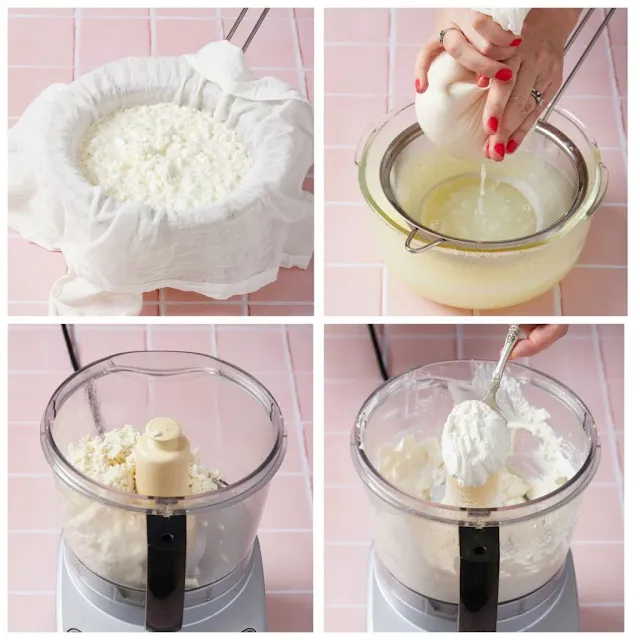How to Make Homemade Cream Cheese
Cream cheese is a staple ingredient in countless recipes, from velvety cheesecakes and creamy frostings to savory spreads and dips. While store-bought versions are convenient, making cream cheese at home is surprisingly easy and allows you to control the flavor, texture, and freshness. With just a handful of ingredients and a few simple steps, you can create rich, smooth, and delicious cream cheese right in your own kitchen.
**Why Make Cream Cheese at Home?**
Homemade cream cheese offers several benefits:
- **Freshness:** You get to enjoy cream cheese at its peak, free from preservatives or unnecessary additives.
- **Customization:** Adjust the tanginess, saltiness, and consistency to suit your preferences.
- **Simplicity:** The process is straightforward and requires minimal equipment.
- **Cost-Effective:** Making it at home can save you money, especially if you use cream cheese regularly.
**Essential Ingredients**
To make cream cheese, you’ll need:
- **Heavy Cream:** Use full-fat heavy cream for the richest flavor and creamiest texture.
- **Whole Milk:** Adds body and balances the richness of the cream.
- **Lemon Juice (or White Vinegar):** Acid is essential to curdle the milk and cream, separating the curds from the whey.
- **Salt:** Brings out the flavor and acts as a mild preservative.
**Equipment You’ll Need**
- **Heavy-bottomed saucepan**
- **Thermometer:** Optional, but helpful for accuracy.
- **Fine mesh strainer or cheesecloth**
- **Large bowl**
- **Food processor or blender:** For blending the curds into a smooth spread.
**Step-by-Step Guide to Homemade Cream Cheese**
1. **Heat the Dairy:**
In a heavy-bottomed saucepan, combine the heavy cream and whole milk. Gently heat the mixture over medium-low heat, stirring occasionally to prevent scorching. Bring it just to a gentle simmer—do not let it boil.
2. **Add the Acid:**
Once the dairy is hot, add lemon juice or vinegar gradually while stirring. You’ll notice the mixture beginning to separate into curds and whey. If the mixture doesn’t curdle immediately, add a bit more acid, a teaspoon at a time.
3. **Let It Sit:**
Remove the saucepan from the heat and allow it to sit undisturbed for about 10-15 minutes. This resting period helps the curds fully separate.
4. **Strain the Curds:**
Line a fine mesh strainer with cheesecloth and set it over a large bowl. Carefully pour the curdled mixture into the strainer. Let it drain for at least an hour, or until the curds are thick and most of the whey has drained away.
5. **Blend Until Smooth:**
Transfer the drained curds to a food processor or blender. Add salt to taste and blend until the mixture is creamy and smooth. If it seems too thick, add a tablespoon of whey or milk to adjust the consistency.
6. **Chill and Serve:**
Scoop your homemade cream cheese into a container, seal it, and refrigerate. The flavor will develop as it chills, becoming even more delicious.
**Tips for Perfect Cream Cheese**
- **Use the Best Dairy:** Quality milk and cream make a noticeable difference.
- **Adjust the Tang:** Increase or decrease the amount of lemon juice or vinegar for more or less tanginess.
- **Add Flavors:** Stir in fresh herbs, chives, roasted garlic, or even a touch of honey for a sweet version.
- **Texture Control:** For a thicker cheese, let the curds drain longer; for a softer spread, blend in a bit of whey or cream.
**Storing Homemade Cream Cheese**
Store your cream cheese in an airtight container in the refrigerator. It will stay fresh for up to a week. Always use clean utensils to avoid introducing bacteria.
**Ways to Use Homemade Cream Cheese**
Homemade cream cheese is incredibly versatile. Here are some ideas:
- Spread on bagels, toast, or crackers
- Swirled into mashed potatoes for extra creaminess
- Used as a base for dips and spreads
- Frosting for cakes and cupcakes
- Filling for savory pastries or stuffed vegetables
**Frequently Asked Questions**
*Can I use low-fat milk or cream?*
For the creamiest results, stick to full-fat dairy. Low-fat versions will yield a less rich and less smooth cheese.
*Can I make this lactose-free?*
You can substitute lactose-free milk and cream, but results may vary depending on the brand and formulation.
*What can I do with leftover whey?*
Whey is full of nutrients—use it in smoothies, soups, bread baking, or as a liquid for pancakes.
**Final Thoughts**
Homemade cream cheese is a revelation—fresh, creamy, and customizable. Once you’ve tasted your own creation, store-bought versions will pale in comparison. Give it a try, and enjoy the satisfaction of crafting this kitchen staple from scratch!









0 Comments